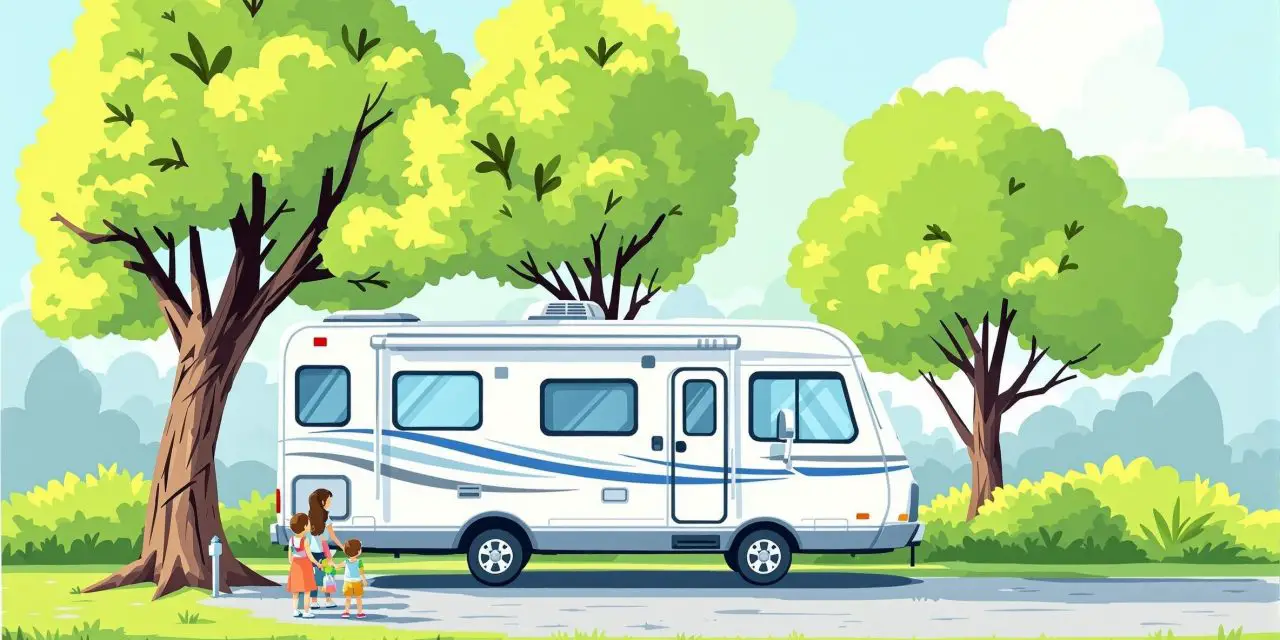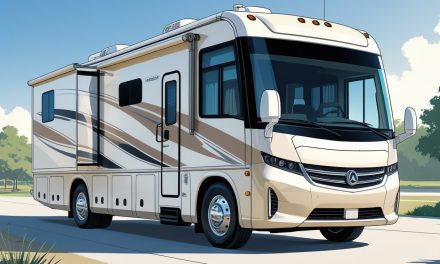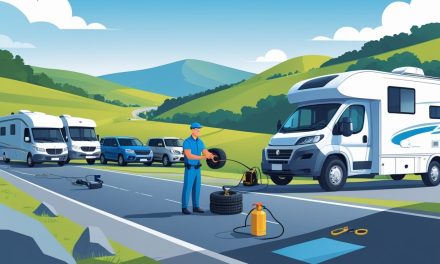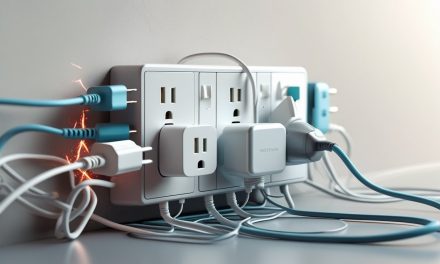Would you like to save this article?
Summer is the peak season for RV adventures, offering endless opportunities for outdoor exploration and memory-making with loved ones. However, as temperatures rise, your home-on-wheels can quickly transform from a cozy haven into an uncomfortable hot box.
The challenge of keeping your RV cool becomes even more crucial when you’re traveling through regions where temperatures soar into the triple digits. Whether you’re a weekend warrior or a full-time RVer, implementing effective cooling strategies can make or break your summer camping experience. In this article, we’ll explore ten game-changing cooling hacks that experienced RVers swear by, helping you maintain comfort without breaking the bank on energy costs.
1. Strategic Ventilation with MaxAir Fans
When temperatures start rising but haven’t yet reached scorching levels, proper ventilation can be your first line of defense. MaxAir fans installed in your RV ceiling can create a significant cooling effect by pulling hot air out while drawing fresh air in through open windows. For optimal airflow, set the fans to “exhaust” mode, which creates a pleasant cross-breeze throughout your rig.
The beauty of quality RV ceiling fans is their temperature-sensing capabilities. Many models can be programmed to automatically activate when interior temperatures reach a predetermined threshold—typically around 78°F. This feature is particularly valuable when you’re away from your RV during the day or for protecting pets if power fluctuations occur.
The average RV ceiling traps approximately 20% more heat than walls do, making roof ventilation an absolute must-have for summer travel.
I tried running without my ceiling fan once, and my RV turned into such a sauna that even my shower started sweating and asked for a towel!
2. Strategic Parking and Shade Utilization
The way you position your RV at a campsite can significantly impact interior temperatures. When possible, orient your rig so that large windows (especially windshields on Class A motorhomes) face north-south rather than east-west. This simple adjustment prevents direct sunlight from beating through your windows during sunrise and sunset hours.
Take advantage of natural shade whenever available. Park under tree coverage when possible, and don’t forget to deploy your awnings to shade the sides of your RV. Additional shade solutions like MoonShade portable awnings can provide extra coverage where needed.
Studies show that parking in shade can reduce interior RV temperatures by up to 25 degrees compared to direct sunlight exposure.
My RV was so grateful when I parked it under a tree last July that I swear I heard the refrigerator sigh with relief. The air conditioner sent me a thank-you card!
3. Window Insulation with Reflectix
When temperatures climb higher, transition from ventilation to insulation by closing windows and applying Reflectix window coverings. This reflective insulation material acts as a thermal barrier, preventing solar heat from entering through glass surfaces.
For Class A motorhomes with large windshields, create reinforced Reflectix panels by sandwiching foam between two layers of the reflective material. This not only improves insulation but also helps the covers maintain their shape and position against curved glass surfaces.
For maximum effectiveness, cut custom Reflectix pieces for every window in your RV and label them accordingly. While the silver foil appearance isn’t aesthetically pleasing from the interior, budget-conscious RVers can enhance appearances by applying decorative fabric to the interior-facing side using spray adhesive.
Reflectix can block up to 97% of radiant heat transfer through windows, making it one of the most cost-effective cooling solutions available.
I installed Reflectix in all my windows last summer, and my RV got so cool it started charging the neighbors admission fees for “air conditioning tourism.”
4. Portable Battery-Operated Fans
Supplement your cooling system with portable, rechargeable USB fans. These versatile cooling devices can be positioned strategically throughout your RV to improve air circulation in specific areas like sleeping quarters.
The clip-on design of many portable fans allows for flexible placement options, and their rechargeable batteries mean you don’t need to worry about power consumption or cord management. As a bonus, these fans can travel with you outside the RV when you want to enjoy outdoor activities without overheating.
A small 5-inch USB fan can circulate approximately 300 cubic feet of air per minute while using less than 5 watts of power.
My portable fan is so reliable that when I forgot it at a campsite once, it followed me to the next stop. That’s what I call “fan-tastic” service!
5. Refrigerator Cooling Enhancement
Absorption-style RV refrigerators generate significant heat during operation, especially in summer months. Help your fridge operate more efficiently by installing small circulation fans both inside the refrigerator compartment and outside at the external vent.
Interior fans improve cold air distribution throughout the refrigerator, eliminating warm spots and helping contents cool more uniformly. External fans at the refrigerator vent help dissipate heat from the cooling unit more efficiently, which improves overall refrigeration performance and reduces strain on the system during hot weather.
Properly ventilated RV refrigerators can operate up to 40% more efficiently, preserving both food freshness and propane/electricity consumption.
| Refrigerator Enhancement | Benefit | Approximate Cost |
|---|---|---|
| Interior circulation fan | Uniform cooling, fewer warm spots | $15-$30 |
| External vent fans | Improved heat dissipation, better efficiency | $30-$80 |
| Combined solution | Maximum cooling performance | $45-$110 |
My RV fridge works so hard in summer that I caught it taking a second job as an ice sculpture artist on its day off!
6. Outdoor Cooking Solutions
Cooking inside your RV during hot weather dramatically increases interior temperatures. Each minute of stovetop or oven use adds heat that your cooling system must then remove. The solution? Take your cooking outside.
Portable grills, Blackstone griddles, and other outdoor cooking appliances allow you to prepare delicious meals without heating your living space. As a bonus, outdoor cooking enhances the camping experience and prevents cooking odors from lingering in your RV.
Indoor cooking can raise RV interior temperatures by 5-10 degrees and increase humidity levels by up to 30%, creating additional strain on cooling systems.
I tried cooking pancakes inside my RV one August morning, and by the time breakfast was ready, I had inadvertently created a Swedish sauna experience. The maple syrup evaporated before it hit the plate!
7. Vent and Skylight Insulation
RV roof vents and skylights are often overlooked sources of heat gain. These overhead openings allow significant solar radiation to enter your RV, even when fans are installed. Insulated vent pillows that fit snugly into ceiling openings can dramatically reduce heat transfer through these areas.
For skylights, especially in bathroom areas, consider permanent solutions like having them covered during roof coating applications or installing insulated covers. If natural light is important, replace traditional skylights with LED lighting fixtures that provide illumination without heat gain.
RV skylights can allow up to five times more heat transfer per square foot than standard RV walls, making them critical points for insulation.
The skylight in my RV bathroom was letting in so much heat last summer that I started calling it my “personal tanning salon.” At least I saved money on spa treatments!
8. Air Conditioner Optimization
When temperatures become unbearable, your RV air conditioning system becomes essential. Maximize its effectiveness with these enhancements:
AC Silencer
Replace standard AC covers with aftermarket silencers that reduce noise while improving airflow. Products like the Wacko AC Silencer not only make conversation possible while cooling but also enhance efficiency through improved air circulation. Many silencer products include washable electrostatic filters that improve air quality while reducing maintenance costs.
Soft Start Technology
Install Soft Start devices on your air conditioners to reduce power surges during startup. These innovative products allow you to:
- Run two AC units on 30-amp service (when normally requiring 50-amp)
- Operate AC units using battery power through an inverter system
- Extend compressor life by eliminating startup jolts
- Reduce the likelihood of tripping breakers at campgrounds with limited electrical capacity
RV air conditioners typically draw 3-4 times their running amperage during startup, which is why Soft Start technology can be so beneficial for power management.
| AC Enhancement | Primary Benefit | Secondary Benefits |
|---|---|---|
| AC Silencer | Noise reduction (up to 70%) | Improved airflow, better filtration |
| Soft Start | Reduced startup power needs | Extended equipment life, battery operation capability |
My RV air conditioner used to scream so loudly at startup that birds would flee from nearby trees. After installing a silencer, they now gather nearby to enjoy the gentle white noise!
9. Portable Air Conditioning Units
For RVs with limited cooling capacity or multiple zones that need temperature control, portable air conditioners can provide targeted cooling where you need it most. These units work particularly well for bedroom areas when your main AC system struggles to cool the entire rig evenly.
When selecting a portable unit, consider:
- BTU rating appropriate for your space
- Water drainage requirements
- Noise levels
- Power consumption compatibility with your electrical setup
A properly sized portable AC unit can reduce bedroom temperatures by 10-15 degrees while using less than half the power of a rooftop RV air conditioner.
I added a portable AC unit to my bedroom area, and it got so cold that I woke up with a penguin as my roommate. He complained about the decor but loved the temperature!
10. High-Quality Internet for Heat Escapes
While not directly cooling your RV, reliable internet connectivity provides the option to escape to air-conditioned public spaces during extreme heat while staying productive. Solutions like HomeFi deliver consistent connectivity for remote work, entertainment streaming, or planning your next cool destination.
Multi-carrier networks that utilize nationwide 4G and LTE infrastructure ensure you stay connected regardless of where your summer travels take you. With the ability to connect up to 32 devices simultaneously, everyone in your traveling party can enjoy connectivity without competing for bandwidth.
Nearly 68% of full-time RVers report using reliable internet connections to locate and navigate to cooler destinations during summer heat waves.
My internet connection is so reliable that even when my RV feels like a convection oven, I can still stream winter documentaries in 4K. Psychological cooling at its finest!
Conclusion
Keeping your RV comfortable during summer heat doesn’t require expensive modifications or constant generator use. By implementing these ten proven cooling strategies in stages as temperatures rise, you can maintain a comfortable living environment while maximizing energy efficiency. From simple ventilation techniques to advanced AC optimizations, these approaches work together to create a comprehensive cooling system for your home on wheels.
Remember that heat management is about prevention as much as active cooling. By blocking solar heat gain, improving air circulation, and optimizing existing systems, you’ll reduce the workload on your air conditioners and enjoy more comfortable summer camping experiences.
What cooling techniques have worked best for your RV adventures? Share your experiences in the comments below!
SOURCES
Grateful Glamper YouTube Channel
E-Trailer RV Accessories and Parts
HomeFi Mobile Internet Solutions
MoonShade Portable Awning Systems






